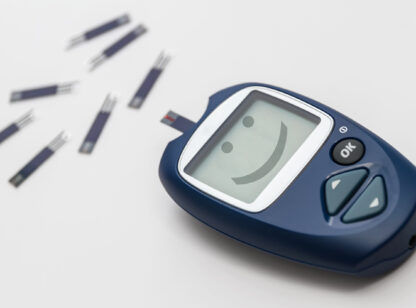Lyme disease is grabbing headlines nationwide. According to the Center for Disease Control (CDC) new Lyme disease cases are 4 times more common annually than new cases of HIV/AIDS. It is also thought to be the leading cause of ‘vector-borne’ infections in the U.S.
Lyme disease is defined as an infectious illness that results from the bite of an infected tick. However, according to some leading chronic disease experts like Dietrich Klinghardt M.D. and James Howenstine M.D., Lyme disease has been documented following a bite by an infected mosquito, flea, and mite as well. The bite releases a microscopic organism called a spirochete named Borrelia burgdorferi. Ticks may transmit a multitude of other potential pathogenic organisms including Babesia, Bartonella, Ehrlichia, Anaplasma, Mycoplasma, and viruses. These are known as co-infections of Lyme disease.
If Lyme infection is treated in the early stages with appropriate antibiotic drugs, outcomes for recovery are favorable. According to the Lyme research group ILADs (www.ilads.org), fewer than 50% of patients with Lyme disease recall ever having been bitten by a tick and in some studies the number is as low as 15%. If not caught in time, Lyme can become a chronic debilitating condition.
Chronic Lyme disease is frequently misdiagnosed. It has been known to mimic multiple sclerosis, lupus, rheumatoid arthritis, fibromyalgia, and chronic fatigue syndrome. Symptoms of chronic Lyme can include fatigue, low grade fevers or flu-like symptoms, night sweats, sore throat, swollen glands, stiff neck, joint pain, arthritis, abdominal pain, diarrhea, chest pain and palpitations, depression, anxiety, sleep disturbance, headaches, partial facial paralysis and other neurologic symptoms. The severity of the Lyme illness is directly proportional to the spirochete load, the duration of infection, and the presence of co-infections. More severe cases result in a weakened immune system.
Many collateral conditions result in persons who have chronic Lyme disease. Damage to virtually all bodily systems can result. For this reason Lyme disease expert, Richard Horowitz M.D., has chosen a new name for chronic Lyme disease called MCIDS or multiple chronic infectious disease syndrome. It is his assertion after treating nearly 12,000 cases of Lyme that multiple bodily systems become collectively dysfunctional. This may include disturbances or dysfunctions of the endocrine system (hormones, primarily adrenal and thyroid), immune system, autonomic nervous system, gastrointestinal system and mitochondrial system. Other associated conditions are systemic inflammation, autoimmunity, heavy metal toxicity, food allergies, and nutritional deficiencies.
Lyme disease is very difficult to diagnose as there is currently no definitive test. When laboratory tests are positive they often indicate exposure only and do not indicate whether the spirochete is currently present and active. Therefore, the diagnosis of Lyme disease is a clinical diagnosis. The patient’s entire clinical picture must be taken into account. Many practitioners treating Lyme also do laboratory testing for Lyme co-infections. It is believed that the presence of co-infection points to probable infection with the Lyme spirochete. Another test often utilized is a test called CD-57. This is a specific group of natural killer cells particularly damaged by Lyme disease. A low level of these cells is an indirect indicator of Lyme disease.
Conventional treatment of Lyme includes long term antibiotic use, but an integrative approach has been shown to be most effective. Supportive therapy includes an aggressive exercise plan, proper rest and adequate sleep, and a diet containing generous amounts of protein, quality fiber, and low intake of processed carbohydrates and fat. Many practitioners also advocate the use of far- infrared sauna therapy.
Nutritional supplements also play an important and supportive role. Some of the key supplements utilized and endorsed by the ILADS group include probiotics, Coenzyme Q10, alpha lipoic acid, magnesium, essential fatty acids, and a pharmaceutical grade and USP certified grade multi-vitamin. There are also a number of new and unique nutraceutical products designed to boost immune system function. Many of these products contain ingredients such as Beta Glucans, immunoglobulin supplementation and Transfer Factors.
Treatment of this disease requires a multifaceted team approach including conventional medicine and alternative therapies. If you suffer from chronic and unexplained illness, ask your doctor or health care provider if Lyme disease has been considered as part of your differential diagnosis. Remember, proactive healthcare is the key to vitality and wellness.
Dr. John Dixon can be reached at the Natural Medicine Group 760.776.0022
Sources: 1) website www.ILADs.com 2) website www.Mercola.com 3) Townsend Letter for Doctors and Patients’, July 2004












































Comments (0)